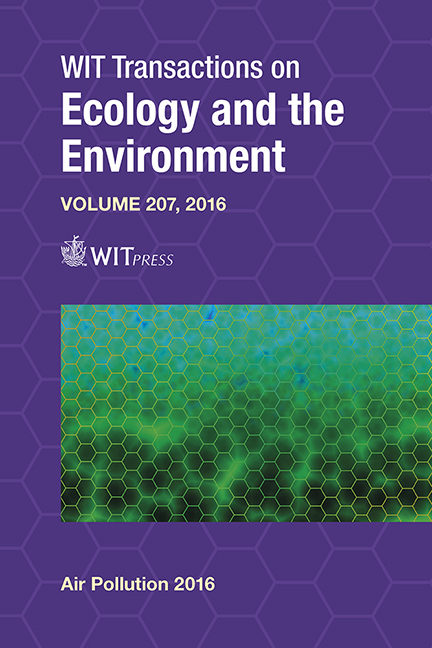Inventory Of Highly Resolved Temporal And Spatial Volatile Organic Compounds Emission In China
Price
Free (open access)
Transaction
Volume
207
Pages
8
Page Range
79 - 86
Published
2016
Size
373 kb
Paper DOI
10.2495/AIR160081
Copyright
WIT Press
Author(s)
J. Li, L. Y. Li, R. R. Wu, Y. Q. Li, Y. Bo, S. D. Xie
Abstract
Volatile organic compounds (VOCs) in the atmosphere play significant roles in secondary organic aerosol (SOA) and ground-level ozone (O3) formation. Emission inventories of biogenic VOCs (BVOCs) and anthropogenic VOCs (AVOCs) for 2013 in China were developed at a spatial resolution of 36km×36km. The monthly emission inventory of BVOCs were established using MEGAN2.1 driven by WRF model, based on the most detailed statistical data and the Vegetation Atlas of China. The emission inventory of AVOCs were established based on statistical data, literature surveyed and model calculated emission factors. The results showed that the total annual BVOC emissions in 2013 were 53.51 Tg, including 32.23 Tg isoprene, 6.10Tg monoterpene, 1.23 Tg sesquiterpene, and 13.96 Tg other VOCs. BVOC emissions from broadleaf trees contributed almost half to the total emissions. Broadleaf trees were the largest contributors to isoprene. The emissions of AVOCs from China in 2013 were 31.02 Tg. Solvent utilization, transportation, industrial processes, biomass burning and fossil fuel combustion generated 10.18 Tg, 7.96 Tg, 7.65 Tg, 3.00 Tg, and 2.22 Tg of VOCs, respectively. Passenger cars, petroleum refining, coke production, field burning of biomass, and raw chemical manufacturing were the primary AVOC sources nationwide. In central eastern China, the estimated biogenic emissions of VOCs were very small, and the anthropogenic emissions of VOCs were dominant in this region. However, in northeastern, and southern China, there are relatively large biogenic emissions of VOCs, leading to an important impact on the ozone production in these regions.
Keywords
emission inventory, biogenic VOCs, anthropogenic VOCs





